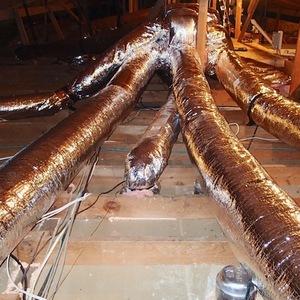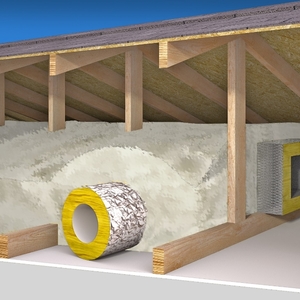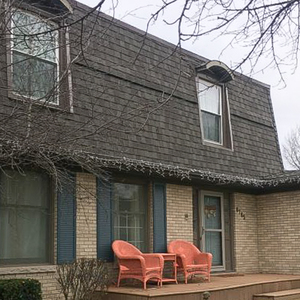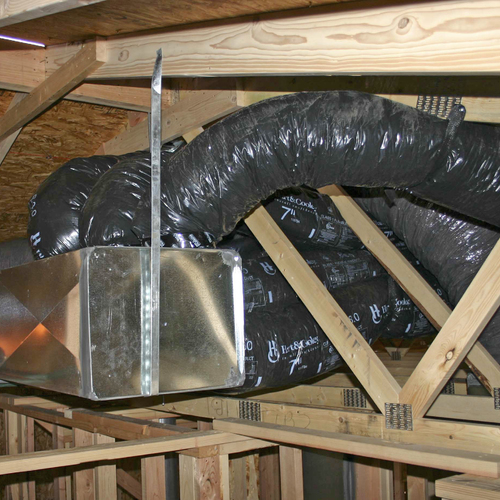
Image Credit: Jimmy Miller
Jimmy Miller is trying to solve a condensation mystery in a Florida ranch-style home that is being renovated. Even though the air conditioning equipment appears to be operating normally, humidity inside the house is between 60% and 65%, and return ducts located in the attic show significant condensation.
The 1,746-square-foot house has R-19 insulation between the rafters and between R-15 and R-20 of rigid foam above the roof sheathing. Steel roofing completes the assembly, Miller writes in a Q&A post at GreenBuildingAdvisor.
Although the house originally had vents in the wood soffits, the soffits have been covered with vinyl. The metal roof doesn’t appear to have a ridge vent.
“There is quite a bit of condensation on the return ducts in the attic,” Miller writes. “We have had two reputable heating and cooling contractors come to assess the situation to no avail. The owner attempted to contact the original mechanical contractor, but has not been able to speak to anyone yet. The owner is nine months pregnant and afraid the mold will be extremely harmful to a newborn.”
High indoor humidity is now causing delays in the project — the sooner the problem is corrected, the better. That’s the topic for this Q&A Spotlight.
Is the attic conditioned or unconditioned?
To GBA senior editor Martin Holladay, it initially looks as if the attic is unconditioned. That is, humid outdoor air can get into the attic, and the space is not air conditioned in the summer or heated in the winter.
“In Florida,” Holladay says, “that means that your attic is filled with hot, humid air. The humidity in that air will condense on any cold surfaces, including air conditioning ducts. The best solution to this problem is to seal up all of the ventilation openings into…
Weekly Newsletter
Get building science and energy efficiency advice, plus special offers, in your inbox.

This article is only available to GBA Prime Members
Sign up for a free trial and get instant access to this article as well as GBA’s complete library of premium articles and construction details.
Start Free TrialAlready a member? Log in















2 Comments
not so fast
On a simple medium-sized ranch, why not abandon the attic return, at least in the short run? Try a simple filtered return at the furnace, just don't suck the hot water heater flue.
And if the return was in the attic, where are the supply ducts? Under the slab? Better check for water in the supply ducts, and if there's water there, you'll have to cap and abandon the supply ducts as well.
Mini-split time?
Condensate removal
Make sure the air conditioning system is removing excess moisture properly at the condensate drain. Also, an oversized system will produce a higher RH because it cannot remove the moisture fast enough. Remove any abnormal humidity sources (i.e. the attic space) and perhaps adjust the fan speed to allow better moisture removal.
Log in or become a member to post a comment.
Sign up Log in